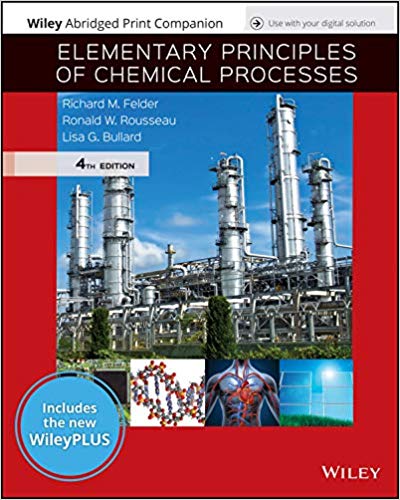Answered step by step
Verified Expert Solution
Question
1 Approved Answer
a - = 1. Reconsider the problem of irreversible chemical reaction in a thin liquid film/catalyst pellet. In the class, we assumed that the convective

a - = 1. Reconsider the problem of irreversible chemical reaction in a thin liquid film/catalyst pellet. In the class, we assumed that the convective mass transfer coefficient k 0 such that the concentrations of species A and B at the top boundary (z = L) are equal to their bulk values Coand 0, respectively. With this assumption we evaluated an expression for the concentration of species A, CA, within the domain (z 0 to L). (a) Rederive the expression for CA using convective boundary condition at the top boundary (z L) for a finite mass transfer coefficient k. (b) Introduce the Damkhler number Da = kyL? /DA = (L/2)2 and Biot number for mass transfer, Bim = kL/DA in the derived expression, where DA is the mass diffusivity of species A. (c) Show that in the limit k 00, the expression for CA will approach the expression derived in the class. = = - V a - = 1. Reconsider the problem of irreversible chemical reaction in a thin liquid film/catalyst pellet. In the class, we assumed that the convective mass transfer coefficient k 0 such that the concentrations of species A and B at the top boundary (z = L) are equal to their bulk values Coand 0, respectively. With this assumption we evaluated an expression for the concentration of species A, CA, within the domain (z 0 to L). (a) Rederive the expression for CA using convective boundary condition at the top boundary (z L) for a finite mass transfer coefficient k. (b) Introduce the Damkhler number Da = kyL? /DA = (L/2)2 and Biot number for mass transfer, Bim = kL/DA in the derived expression, where DA is the mass diffusivity of species A. (c) Show that in the limit k 00, the expression for CA will approach the expression derived in the class. = = - V
Step by Step Solution
There are 3 Steps involved in it
Step: 1

Get Instant Access to Expert-Tailored Solutions
See step-by-step solutions with expert insights and AI powered tools for academic success
Step: 2

Step: 3

Ace Your Homework with AI
Get the answers you need in no time with our AI-driven, step-by-step assistance
Get Started


